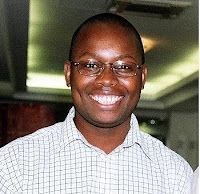Unpacking Agriculture and Food Security

Global Hunger
Today our world is home to 6.7 billion people; 25,000 people (adults and children) die every day from hunger and related causes; 963 million people do not have enough to eat - more than the populations of USA, Canada and the European Union. Of the total number of over 963 million chronically hungry people, over half are in Asia and the Pacific and about a quarter are in Sub-Saharan Africa.
In this article, I discuss the most important issue(s) in relation to agriculture and food security and how these can help to resolve the problem of global hunger.
What is the role of agriculture?
There is no doubt about the fact that food will only be available in the world through sustainable agriculture production. We have witnessed, sadly, in the last twenty to thirty years the world veering away from this fact – the result of which was the catastrophic global food crisis experienced in the latter part of the last decade, 2007 to 2008 to be precise.
We need to learn from our past mistakes - we cannot continue to neglect the important role that agriculture plays in socio-economic development. Suffice to say that agrarian reform has been a catalyst for economic growth and development for most nations deemed developed today in the Americas, Europe and Asia. As such, state as well as non-state actors need to work together to achieve food security and combat global hunger. There is need to increase lobby and advocacy, and the provision of technical expertise to governments and multi-lateral institutions to keep up the momentum on the following two important milestones achieved in the last 3 years: (i) There is greater global recognition of the role and contribution of agriculture to global poverty reduction efforts; (ii) There a general consensus among governments on the need to increase investment in agriculture - at least 10% annual budgetary allocation has been agreed by African Governments through the Comprehensive African Agriculture Development Programme (CAADP) - a programme of the New Partnership for Africa's Development (NEPAD).
However, stumbling blocks remain in the way for significant improvements in global agriculture outputs - the main one is the delay in concluding the WTO's Doha Round of talks in relation to agriculture subsidies.
What does the future hold for global food security?
The World Food Summit of 1996 defined food security as existing “when all people at all times have access to sufficient, safe, nutritious food to maintain a healthy and active life”. Food security has three main pillars or strands: (a) food availability, which is defined as sufficient quantities of food available on a consistent basis; (b) food access, which is having sufficient resources to obtain appropriate foods for a nutritious diet, and (c) food use or utilisation, which is appropriate use based on knowledge of basic nutrition and care, as well as adequate water and sanitation.
The main obstacle to achieving global food security is its second strand, that of access. A lot of effort has been put to improve availability of food through production, as can be seen from the initiatives and commitments discussed in 5(a) above. Access, in my view, is the second tier or step towards achieving food security. Experience shows, however, that in most agriculture and food security strategies issues of access tend to receive less attention or even get completely left out at the expense of increasing agriculture production. For example, in 2010 Malawi had a bumper yield of maize which led to surplus stock of the same in its national grain silos and yet a significant proportion of people in districts of Nsanje and Chikhwawa were food insecure. A lesson from this case is this, while by measure of food production/availability the country is nationally food secure, the challenges of inequitable distribution and access show that there is food insecurity at the household level in some communities aforementioned.
Yet we also know that, if the issue of access were effectively resolved, the world would attain food security right now because there is enough food globally to feed everyone BUT this food is inequitably distributed. Hence the role of food aid programming in this aspect - I believe that the primary strength in food aid programming lies in its logistical capabilities, which help to resolve the current distributional (access) challenges. Therefore, while addressing agriculture production issues raised above any meaningful agriculture and food security strategy should also focus on finding solutions to the problems of access and utilisation, which is the ultimate outcome of food security.
Kennedy Bisani Lweya, PhD
5 Junuary 2011
Johannesburg, South Africa
Labels: Agriculture; Food Security


0 Comments:
Post a Comment
<< Home